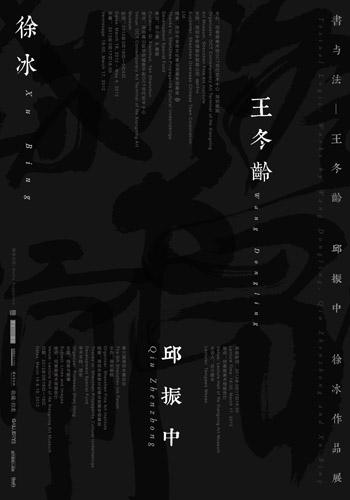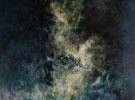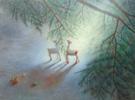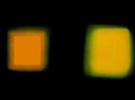
展览时间:2012-02-17 ~ 2012-05-04
展览地点:OCT当代艺术中心
策 展 人:祁小春、严善錞
参展艺术家:王冬龄、邱振中、徐冰
主办单位:何香凝美术馆OCT当代艺术中心(OCAT)、深圳画院
展览介绍:
在中国当代艺术的格局中,书法,一直处于边缘状态。这与它在传统文化中的主流地位形成了巨大的反差。它关乎中国文字的起源和流变,指引着中国绘画的发展方向,是中国文化乃至中国玄学的一个重要的载体。现代的学科分类,新的艺术理念的引入,切断了书法与中国文化的整体关系,它的价值观和美学趣味也屡遭质疑。但是,书法作为一种独立的艺术门类,在今天社会中却显示出一种前所未有的活力,冠以书法名义的各类学校、协会乃至商业机构和市场行为层出不穷,一片繁荣景象。是当代艺术出现了问题?还是书法家们对当代艺术不屑一顾?书法与当代艺术的这种关系确实令人遗憾。是展,我们邀请了两位书法家和一位当代艺术家,我们试图从他们的作品中,来审视和检讨一下书法与当代艺术的关系,寻找书法在未来发展的各种可能。
王冬龄是一位传统功力深厚的书法家。他的草书,不仅开拓了书法艺术的视觉经验,也探索了由案头书法向展示书法发展的各种可能性,探索了书写行为的各种可能性。在用笔上,他从运指、运腕、到运臂乃至运动全身,都悉心尝试。近年来,他全力以赴,专攻巨幅,着力于对身体与作品的生发关系的体悟和表现。书写的行为,是传统书法一个非常重要的课题,它的方式和过程,不仅关乎作品的美学品格,也关乎作者的意志情操、乃至生命观和宇宙观。
邱振中是一位具有诗人气质和极富思辨力的书法家。他志在传统书法向当代艺术的转化,通过扩展作品的造型题材,通过扩展作品的文字题材,为书法的创作,开辟了新的空间。书写的内容与书写的形式,一直是书法发展过程中两个不可分离的基本要素。从字、句、篇,到用笔、结字、章法,书法的阅读和观赏,都关乎它的艺术品质,这是传统书法的核心价值所在。为了在一个更为开放的情景下体现这一核心价值,三十多年来,邱振中进行了严密的理论思考和不断的创作实践。
徐冰是一位出色的中国当代艺术家。文字,一直是他重要的创作主题。从《天书》、《新英文书法》到《地书》,二十多年来,他对文字的表现形式、它的意义和阅读的关系,进行了不同层面的探索。字体的演进、字型的变化、字序的排列、字义的释读,都是促进书法发展的重要的因素。李斯、蔡邕、王羲之、颜真卿的出现是与篆书、隶书、草书和楷书的出现分不开的。明清之际以傅山为代表的大量怪异书法的出现,似乎也展示出艺术家在文字对与书写的制约方面的思考。徐冰以其独特的视野和表现手法,为我们开辟了一个“文字”的全新世界,也为书法未来的发展提供了一个广阔的空间。
本次展览将特别邀请日本书法理论家谷川雅夫作为学术主持,并于开幕式期间,在“人文之声——何香凝美术馆系列学术讲座”上向观众介绍日本前卫书法。
In Chinese contemporary art, calligraphy has always been relegated to the margins, forming a stark contrast with the mainstream status it enjoyed in traditional culture. It has been integral to the origins and changes in Chinese writing, it led the development of Chinese painting, and is an important carrier of Chinese culture, even Chinese mysticism. Modern scientific compartmentalization and the influx of new artistic concepts have severed the comprehensive connection between calligraphy and Chinese culture, and its values and aesthetics have come under constant attack. But as an independent art form, it is presenting an unprecedented vitality in today’s society, with numerous schools, associations and even commercial organizations arising in its name, presenting a visage of prosperity. Is the problem with contemporary art, or is it that calligraphers care little for contemporary art? The relationship between calligraphy and contemporary art at the moment is regrettable. For this exhibition, we have invited two calligraphers and one contemporary artist, and we will attempt, through their artworks, to examine and discuss the relationship between calligraphy and contemporary art in order to find new possibilities for the future development of calligraphy.
Wang Dongling is steeped in the traditional skills of calligraphy. His caoshu cursive script has not only broadened the visual experience of the calligraphic art, it has also explored numerous possibilities for the development of everything from desktop calligraphy to exhibition calligraphy, exploring the various possibilities for the act of writing. In his use of the brush, he has made painstaking experiments in movement from the movement of the fingertips to the movement of the wrist, movement of the arm and on to the movement of the entire body. In recent years he has focused a great deal of effort on understanding and expressing the relationships between the body and the work of art. The act of writing is an extremely important theme in traditional calligraphy. His methods and processes touch not only on the aesthetic qualities of the artwork but also on the mindset of the artist, even his views on life and the universe.
Qiu Zhenzhong is a calligrapher with the air of a poet and thinker. He is dedicated to the transition of calligraphy into contemporary art, opening up a new space for calligraphic creation through the expansion of materials and themes. Form and content have always been inseparable elements throughout the development of calligraphy. The artistic qualities of a work of calligraphy, how it is read and appreciated, depend on the words, sentences and passages as well as the brushwork, word structure and layout. This is the core value of traditional calligraphy. In order to embody this core value in a more open setting, Qiu Zhenzhong has spent the past thirty years engaging in rigorous research and ceaseless creative practice.
Xu Bing is an outstanding Chinese contemporary artist. Words have always been an important creative theme for him. From Book from the Sky and New English Calligraphy to Books from Earth, the artist has spent over two decades exploring the relationships between the expressive forms, meanings and the reading of words. The development of characters, changes in their makeup, their order and interpretation have all been important elements in the development of calligraphy. The emergence of such luminary figures of calligraphy as Li Si, Cai Yong, Wang Xizhi and Yan Zhenqing cannot be separated from the rise of the zhuan, li, cao and kai scripts. The emergence of so many strange forms of calligraphy between the Ming and Qing dynasties, represented by master calligrapher and thinker Fu Shan, seems to present to us the artist’s thoughts on the limitations placed on writing by words. With his unique vision and expressive techniques, Xu Bing has opened up a new world of “words” for us while also providing a vast space for the future development of calligraphy.
We have specially invited Japanese calligraphy theorist Masao Tanigawa to serve as academic host for this exhibition. At the exhibition opening, he will present Japanese avant-garde calligraphy as part of the “Voice of the Humanities – He Xiangning Art Museum Academic Lecture Series.”
- 2012-02-18 ~ 2012-02-28李杭育个人画展:生命史·海洋与洞穴
- 2012-03-07 ~ 2012-03-20东方戏——唐勇钢油画个展
- 2012-02-18 ~ 2012-03-03重建桃花源——王淑平当代艺术巡回展
- 2012-02-15 ~ 2012-02-25水墨“进行”——乙卜当代水墨作品展
- 2012-03-01 ~ 2012-03-25彼岸:潘玉良艺术展
- 2012-02-10 ~ 2012-02-26当代优秀美术作品展——龙腾盛世·浙江美术馆藏品展览之四
- 2012-02-11 ~ 2012-04-26黄宾虹山水画展——龙腾盛世·浙江美术馆藏品展览之三
- 2012-02-11 ~ 2012-03-29农民画展——龙腾盛世·浙江美术馆藏品展览之二
- 2012-02-10 ~ 2012-02-26近现代书画名家作品展——龙腾盛世·浙江美术馆藏品展览之一
- 2012-02-12 ~ 2012-02-24对月——何森个展










